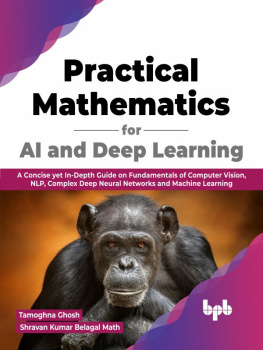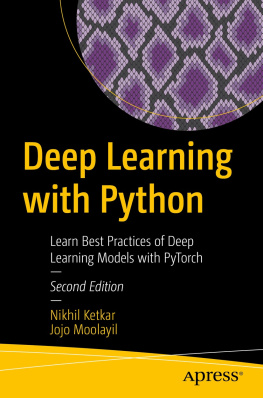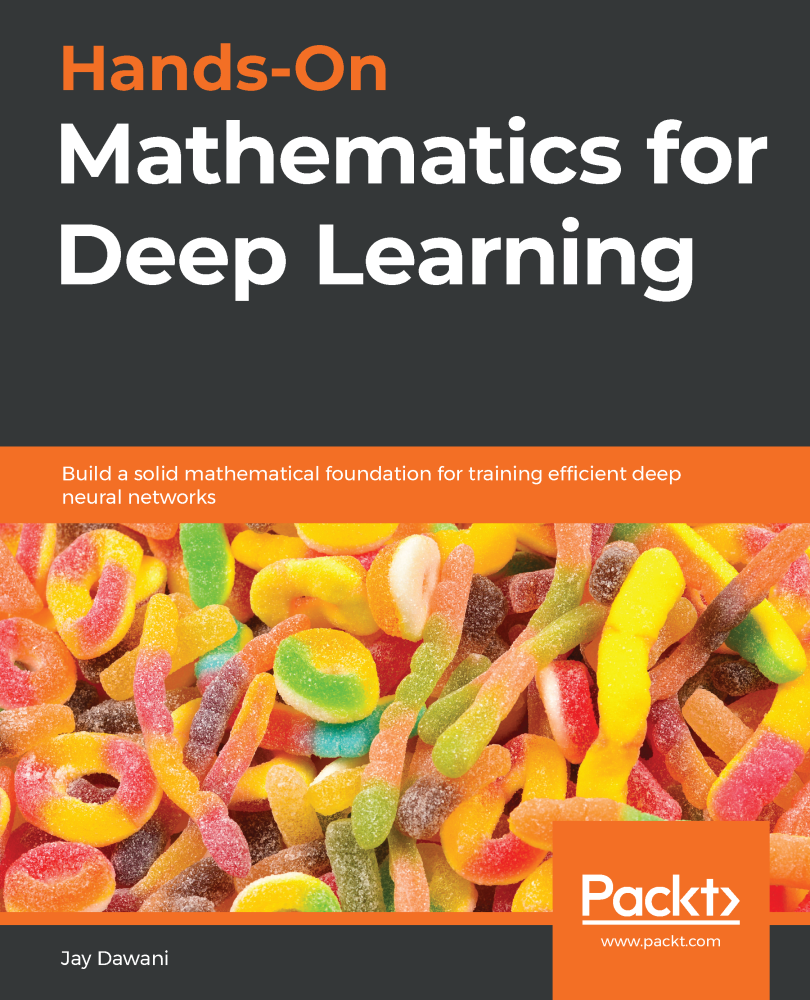Jay Dawani - Hands-On Mathematics for Deep Learning: Build a solid mathematical foundation for training efficient deep neural networks
Here you can read online Jay Dawani - Hands-On Mathematics for Deep Learning: Build a solid mathematical foundation for training efficient deep neural networks full text of the book (entire story) in english for free. Download pdf and epub, get meaning, cover and reviews about this ebook. year: 2020, publisher: Packt Publishing, genre: Home and family. Description of the work, (preface) as well as reviews are available. Best literature library LitArk.com created for fans of good reading and offers a wide selection of genres:
Romance novel
Science fiction
Adventure
Detective
Science
History
Home and family
Prose
Art
Politics
Computer
Non-fiction
Religion
Business
Children
Humor
Choose a favorite category and find really read worthwhile books. Enjoy immersion in the world of imagination, feel the emotions of the characters or learn something new for yourself, make an fascinating discovery.

- Book:Hands-On Mathematics for Deep Learning: Build a solid mathematical foundation for training efficient deep neural networks
- Author:
- Publisher:Packt Publishing
- Genre:
- Year:2020
- Rating:3 / 5
- Favourites:Add to favourites
- Your mark:
Hands-On Mathematics for Deep Learning: Build a solid mathematical foundation for training efficient deep neural networks: summary, description and annotation
We offer to read an annotation, description, summary or preface (depends on what the author of the book "Hands-On Mathematics for Deep Learning: Build a solid mathematical foundation for training efficient deep neural networks" wrote himself). If you haven't found the necessary information about the book — write in the comments, we will try to find it.
A comprehensive guide to getting well-versed with the mathematical techniques for building modern deep learning architectures
Key Features- Understand linear algebra, calculus, gradient algorithms, and other concepts essential for training deep neural networks
- Learn the mathematical concepts needed to understand how deep learning models function
- Use deep learning for solving problems related to vision, image, text, and sequence applications
Most programmers and data scientists struggle with mathematics, having either overlooked or forgotten core mathematical concepts. This book uses Python libraries to help you understand the math required to build deep learning (DL) models.
Youll begin by learning about core mathematical and modern computational techniques used to design and implement DL algorithms. This book will cover essential topics, such as linear algebra, eigenvalues and eigenvectors, the singular value decomposition concept, and gradient algorithms, to help you understand how to train deep neural networks. Later chapters focus on important neural networks, such as the linear neural network and multilayer perceptrons, with a primary focus on helping you learn how each model works. As you advance, you will delve into the math used for regularization, multi-layered DL, forward propagation, optimization, and backpropagation techniques to understand what it takes to build full-fledged DL models. Finally, youll explore CNN, recurrent neural network (RNN), and GAN models and their application.
By the end of this book, youll have built a strong foundation in neural networks and DL mathematical concepts, which will help you to confidently research and build custom models in DL.
What you will learn- Understand the key mathematical concepts for building neural network models
- Discover core multivariable calculus concepts
- Improve the performance of deep learning models using optimization techniques
- Cover optimization algorithms, from basic stochastic gradient descent (SGD) to the advanced Adam optimizer
- Understand computational graphs and their importance in DL
- Explore the backpropagation algorithm to reduce output error
- Cover DL algorithms such as convolutional neural networks (CNNs), sequence models, and generative adversarial networks (GANs)
This book is for data scientists, machine learning developers, aspiring deep learning developers, or anyone who wants to understand the foundation of deep learning by learning the math behind it. Working knowledge of the Python programming language and machine learning basics is required.
Table of Contents- Linear Algebra
- Vector Calculus
- Probability and Statistics
- Optimization
- Graph Theory
- Linear Neural Networks
- Feedforward Neural Networks
- Regularization
- Convolutional Neural Networks
- Recurrent Neural Networks
- Attention Mechanisms
- Generative Models
- Transfer and Meta Learning
- Geometric Deep Learning
Jay Dawani: author's other books
Who wrote Hands-On Mathematics for Deep Learning: Build a solid mathematical foundation for training efficient deep neural networks? Find out the surname, the name of the author of the book and a list of all author's works by series.





